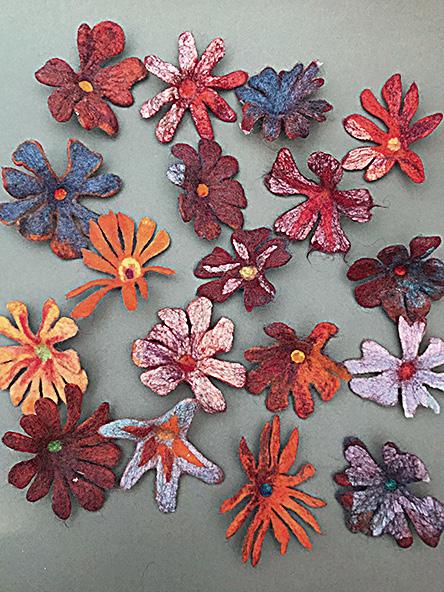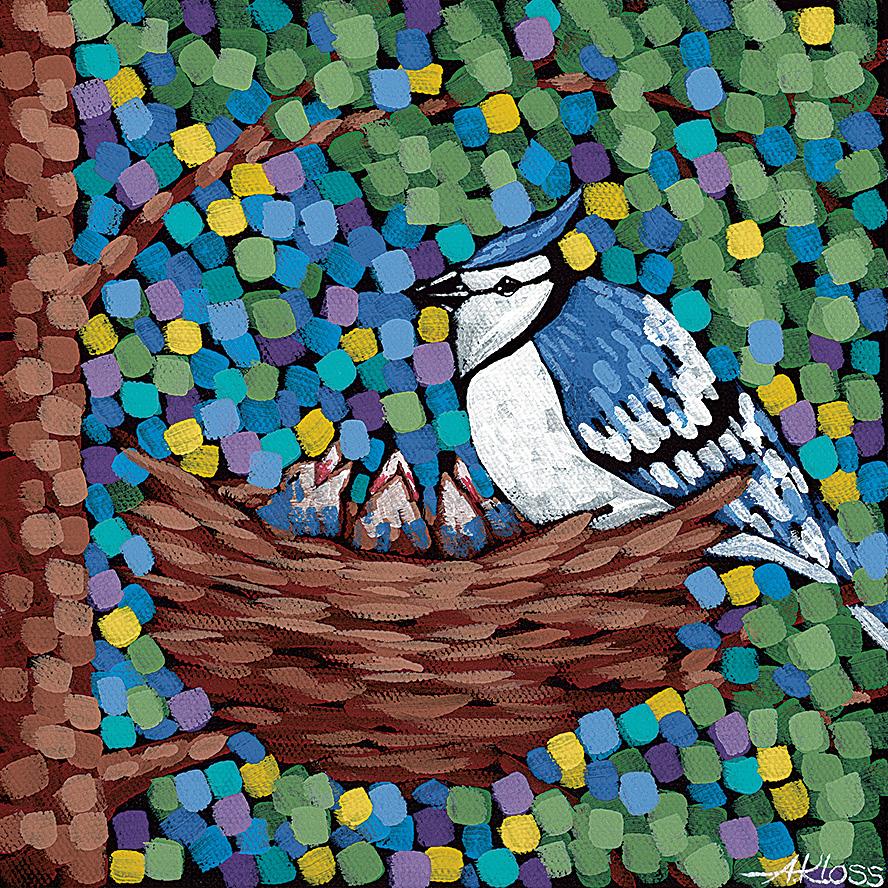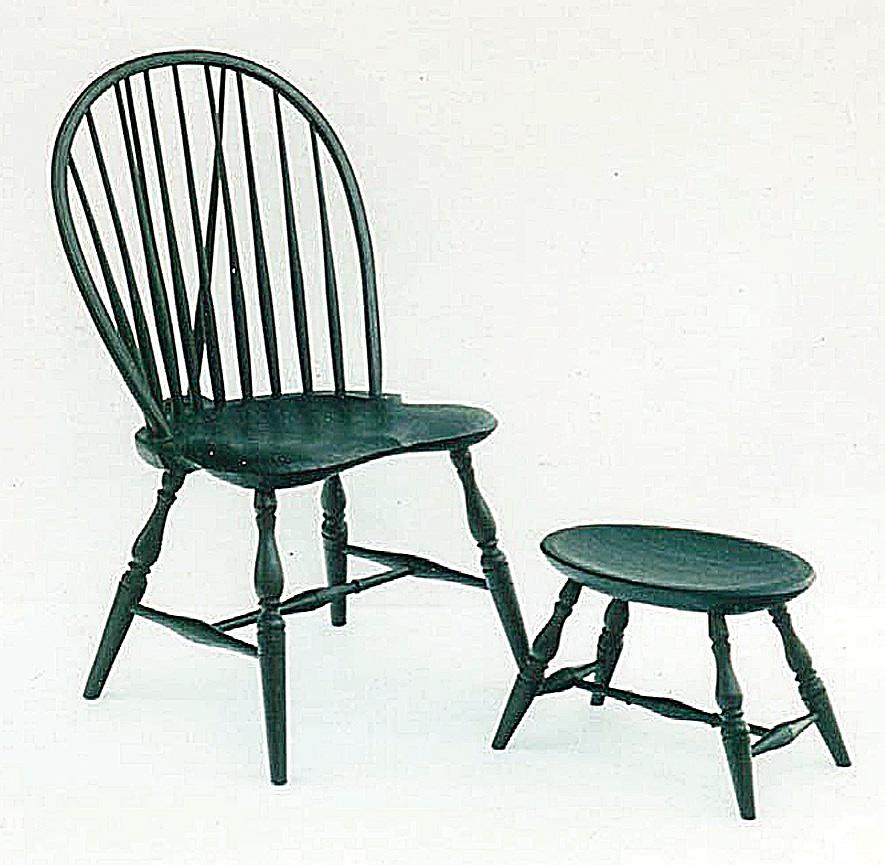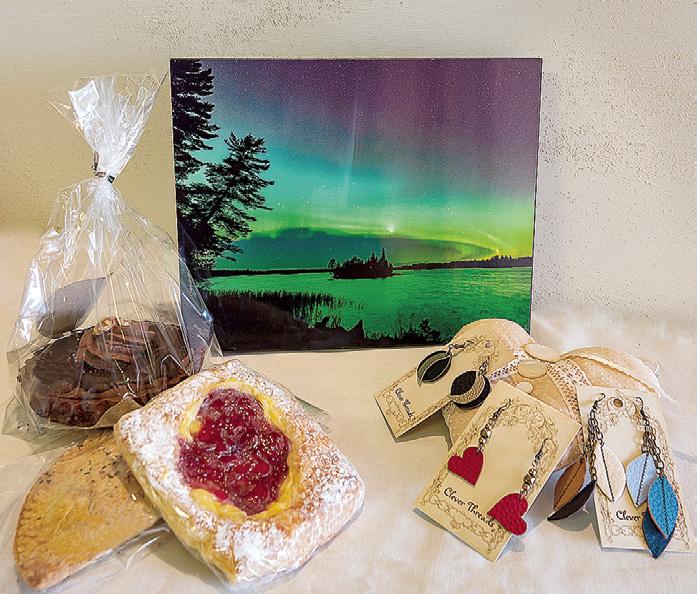
16 minute read
Spotlight
By Breana Roy Signs of Spring
According to the calendar, the first day of spring is Saturday, March 20. While it’s doubtful that Mother Nature will follow suit in the Northern Wilds, we know that spring is just around the corner—even if there’s still snow on the ground. So be sure to keep an eye out for signs of spring.
Advertisement
Felted flowers by Grand Marais artist Elise Kyllo. To see more from Kyllo, visit: worksinwool.
com. | ELISE KYLLO

“Spring in Lake County” by Dave Gilsvik. You can find more of his paintings at Sivertson Gallery in Grand Marais.
| DAVE GILSVIK
Aaron Kloss created this piece, titled “Tiny Blue Jays.” To view more of his work, visit: aaronkloss.com.
| AARON KLOSS
“The Uncommon Loon” by Duluth artist Jordan Sundberg. To view more from
Sundberg, visit: tincupdesignco.com. | JORDAN SUNDBERG



Ely artist Joe Baltich created this piece, titled “Little One.” See more from Baltich at: joebaltichart.com.
| JOE BALTICH
“Gooseberry Falls” by Dan Wiemer. His work can also be found at Sivertson
Gallery in Grand Marais. | DAN WIEMER


John Beltman working a pole lathe. | SUBMITTED
Woodworking
BEHIND THE CRAFT: By John Beltman


Ask John Beltman where the wood for his chairs come from and he’ll tell you the exact location of each ash swamp, pine stand, or logger’s landing.
| SUBMITTED
Ask someone where they got their chairs and my bet is that seldom, if ever, will anyone respond that they came from such and such trees. That would sound silly, unless, of course, you’ve noted the trend in the food industry to name the orchard, the apiary, or the plot of ground from which a menu item was “sourced.” Few of us can identify the wood from which our wood products were made let alone the forest or plantation from which the wood was harvested. We say instead, if asked, “That chair was my grandmother’s” or “We bought them in a secondhand store,” or more often the answer is simply “Ikea.” in the case of the handmade Windsor chairs that I specialize in, it takes a forest to build a chair. Lest you take me too literally, not an entire woodlot to make a single chair, rather a variety of species.
Windsor chairs are an interesting example of engineering in which a lot is being demanded of the wood. The species of wood must be carefully chosen. Windsor chairs are defined by the construction type rather than by the specific chair. The seat is a solid, wide plank of wood with holes drilled to accept the legs. The back is socketed into holes drilled into the seat and stretchers are socketed into the legs. All the joinery on the Windsor chair is round tenons into round holes. This makes for a chair that can be made using simple hand tools with readily available materials from the local woods. As Windsor chairs became wildly popular in this country by the end of the 18th century, they evolved to a uniquely American style, with or without arms, and various configurations of chair backs, some with complex bent parts. Most Windsor chairs have turned legs, stretchers and arm posts lending to distinct regional variations and styles specific to the maker. What all handmade Windsor chairs share in common is a design engineered to be strong yet flexible and lightweight. To accomplish this, handmade Windsor chairs are made from different species of wood for different parts of the chair, depending on the demands of that chair part. The beauty of a Windsor chair is in the silhouette as opposed to the color or grain of the wood.
Although available species vary from one place to the next, the wood of choice for chair seats in North America is eastern white pine (Pinus strobus), prevalent across a range of climates along the east coast westward to the Great Lakes. This species has, since earlier times, been prized for wide, clear planks which are easily sculpted into a commodious seat. It has greater stability than most other northern Minnesota coniferous species. Basswood (Tilia americana) has similar characteristics and is also well-suited for carving seats. It’s common across the northeastern United States and has the further advantage of being stronger than white pine.
While both of these woods make for a good seat, they are too soft to meet the demands of the chair back, which is called upon to withstand the forces of not only the user leaning back in the chair but also twisting and turning. For the chair back, the best woods are stringy and tenacious. Having the capacity to bend, these woods flex under use but also respond well to steam bending, readily assuming the complex shapes required of the continuous armchair and bow-back designs. Good choices for chair backs are ash, either Fraximus negra or americana. Hickory is strong, but not common to northern Minnesota. While northern red oak (Quercus rubra) meets most of the criteria, my personal favorite is white oak (Q. alba) or the subspecies more commonly found in northern Minnesota, bur oak (Q. macrocarpa). Bur oak has strength with enough flex to resist breaking and takes well to steam bending.
Stringy and tenacious species present difficulties when turning legs, stretchers and arm posts. Windsor chair designs were first developed at a time when lathes were human powered, the spring pole lathe being the tool of choice for early chair builders. (Modern lathes have evolved with enough weight and horsepower that in combination with modern abrasives just about any wood can be forced into a chair leg.) Because chair legs are thicker and stiffer, they don’t require the stringy toughness of the chair back. The most sought-after woods for turning possess creamy smooth grain. Choices in northern climes include primarily birch (Betula papyrifera) and the maple family (Acer). Birch is more readily available; maple has the advantage of being somewhat stronger.
By carefully choosing wood which meets the specific demands of each part of the chair, a chair can be built of locally harvested materials using traditional tools and methods. Ask me where my chairs come from and I’ll source for you the exact location of each ash swamp, pine stand, or logger’s landing.
John Beltman is a lead woodworking instructor at North House Folk School, where traditional craft is taught on the shore of Lake Superior.

Melissa Boman’s bold use of color transforms a wintery Lake Superior sunset. | SUBMITTED
An avid fly-fisher, Boman produces detailed studies of her quarry, such
as this brook trout [ABOVE] and steelhead [BELOW]. | SUBMITTED


Nature, in Detail
CREATIVE SPACE: By Shawn Perich
Growing up in Duluth’s Lincoln Park, Melissa Boman was often somewhere on the banks of Miller Creek.
“I spent a lot of time outside,” she says. “Mom said I always had dirty hands as a kid.”
The outdoors remains central to her life, both in her professional work as a wildlife biologist specializing in small mammals and bats, and in her intertwined pursuits as an avid fly angler and artist. Her growing body of work includes paintings and drawings that reflect the natural world.
Boman began drawing in middle school, discovered she had a knack for it and began developing her skills. In high school, she got more into music and art, which meant she spent more time inside and became disconnected from nature. In college, she started in architecture, but found it wasn’t a good fit. She also began volunteering at the Wildwoods wildlife rehabilitation facility in Duluth, which led to a change in her career path.
“I fell in love with learning the natural histories of critters and getting back to nature,” she said.
She changed course in college, earning a biology degree from the University of Minnesota’s Department of Fisheries, Wildlife and Conservation Biology. And she continued to draw, often detailed portraits of creatures large and small.
“I worked in charcoal and graphite,” she says. “I was intimidated by color. But when you are outside, it is hard to miss the color in nature. That led me to try the challenge of painting.”
Her acrylic paintings are vibrant and detailed. A ruby-throated hummingbird perched on a lichen-encrusted branch shows the fibers of individual feathers and the intricacy of varied lichen species. The cheek of a steelhead trout is awash in a rainbow of hues.
“I now love colors that pop, she says. “That’s what makes my art stand out.”
All of her work and the colors it contains are inspired by the natural world.
“A Lake Superior sunrise is like no other,” she says. “Even in the depth of winter, color is there if you take the time to notice it.”
Perhaps channeling her inner child, Boman prefers time outdoors to time online. She enjoys looking for wildlife and the tracks critters leave behind, as well as studying the tiny world of mosses, lichens and fungi. She is hopeful that the increase in participation in outdoor activities brought about by the pandemic will continue to encourage people to get out more often to enjoy nature and enjoy the little discoveries they can even make in their own backyards.
The studies of steelhead and brook trout in her art derive from her love of flyfishing. She likens fly fishing to art, because you must be wholly immersed in both activities, paying attention to detail.
Her interest in fly fishing is wide-ranging.
“Last summer, I caught 29 species on the fly,” she says. “including shiners, carp, quillback, goldfish, pike and bass.”
Currently, Boman’s work isn’t shown in any galleries, partly due to the challenges brought about by the pandemic. She plans to have her work in Duluth’s Dovetail Café next winter. Her work can be found on her website, melbomanart.com.

A wildlife biologist by profession, Boman’s artwork is rooted in nature and
inspired by her love of the north. | SUBMITTED
Feb. 19-March 5 Ontario’s longest running, premiere ice climbing festival in Nipigon will be held virtually this year. Between Feb. 19 and March 5, choose your own adventure; get outdoors and climb. Take photos and use the hashtags #mylocalice and #nipigonicefest. Then, take part in the online auction between March 5-20. There will also be a live (virtual) Nipigon ice fest event on March 6. To learn more, visit: outdoorskillsandthrills.com/ nipigonicefest.

WOOD MONTH
This year, Wood Week has gone virtual and become Wood Month this March. Join the North House Folk School in Grand Marais in the virtual woodshop for a series of free presentations from near and far. You’ll explore technique, cultural history, tools and interesting current work with Mary May, Curtis Buchanan, Barn the Spoon, Daniel Lundberg, Joshua Klien, Jarrod Dahl and others. Held Thursday evenings and Friday mid-days on Zoom. BYO wood shavings. A full schedule and registration are available online. For more information, visit: northhouse.org.

March 13, Saturday Located at the Masonic Lodge (4731 Gladstone St.) in Duluth, Nice Girls of the North is a group of local women artists and crafters. Held from 10 a.m.-3 p.m., each monthly marketplace event includes guest artists and a new variety of handmade products such as jewelry, wall art, soap, cards, makeup, clothing, photography, bags, bibs, yarn, embroidery, pillow cases, knit items, heirloom dolls and stuffed animals, baked goods, and jams. Strict safety measures are followed which limit the number of people in the building at a time, masks are required, and sanitizer is provided. There is a convenient central checkout and credit cards are accepted. To learn more, visit: nicegirlsofthenorth.com.
Hosted by 23rd Veteran, the Nearly Naked Ruck March in Duluth will take place Saturday, March 27.
| DALLAS SMITH PHOTOGRAPHY


St. Urho’s weekend in Finland will include a parade at noon on Saturday,
March 20. | SUBMITTED
VIRTUAL WINTER FUNDAYS
March 14 and 28 Because of COVID-19, this year’s family-friendly Winter FunDays programming in Thunder Bay will be held virtually for free. On Sunday, March 14, join Club Cultural Francophone de Thunder Bay as they share their recipes and show you how to make your own maple syrup treats. Then on Sunday, March 28, take part in the Passports to the Past event. Join the Thunder Bay Museum by grabbing your passport and traveling around Thunder Bay to visit and learn about important landmarks around the city. There are 10 different places to visit, a map to follow, and a passport with stickers to mark off where you have been. When you are done, visit the Thunder Bay Museum and show your passport to receive a small prize (you must register for a passport by March 19 to participate). To learn more, visit: thunderbay.ca/winterfundays.
ST. URHO’S FINLAND CELEBRATION
March 19-21 St. Urho’s weekend in Finland will be a bit different this year. There are no indoor social activities at the Community Center. Instead, there will be a combination of online/livestream events, as well as outdoor events, the main one being the parade at noon on Saturday, March 20. The parade will also be livestreamed for folks to watch at home. This year’s theme is Survival Mode. Please wear a mask and keep groups small. For an updated list of events, visit: bit.ly/sturhos2021. To livestream the event, visit: facebook.com/ sturho.
RACHEL RAE KLESSER ART OPENING AND RECEPTION
“Rae” Klesser on March 26 from 4-8 p.m. titled “Feathers, Fur and Foliage / My First Two Years in Grand Marais.” This free event is open to the public and it will be catered by Rebel Girls of Grand Marais. Covid safety precautions and opportunities for social distancing will be implemented. Rae will have many of her original paintings, as well as prints and lesser expensive items, available for purchase. There will be opportunities to meet, greet and talk with Rae about her work. Rae lives just with her husband, four dogs, a cat and chickens in the north woods in a home she designed herself. She loves living on the North Shore of Lake Superior and draws her inspiration from the natural beauty of the area. She is a mixed media artist with emphasis on watercolor for the last five years. Rae believes that there is always time for making art and adding creativity to life. She is drawn to ravens and has recently added several raven paintings to her exhibit collection. In addition, she will be highlighting several nostalgic locations and features of Grand Marais in her work. To learn more about the event, visit: facebook.com/joyandcompanymn.
NEARLY NAKED RUCK MARCH
March 27, Saturday Hosted by 23rd Veteran, the Nearly Naked Ruck March in Duluth is a hike that raises money to help veterans transition back into society. However, this isn’t an ordinary hike; you must carry a pack full of weight (20 lbs is recommended for those who are new to rucking). If you load your rucksack with canned goods and clothing, you can drop it off at the finish line for local veterans in need. This year, you can sign up to participate in-person or virtually; rucking in-person will be first-come, first-served based on when you register. The in-person hike begins at 11 a.m. at Skyline Parkway, which is a 1-mile loop. Anyone in-person that hikes 10 miles (10 loops), will receive an “All the Way” patch. The route will also include a water stop, snacks, music and more. To register or learn more, visit: 23rdveteran.org.
SUMMER IS A PERFECT TIME TO KEEP LEARNING.
The Soul of our Communities Between ropes courses, animal-tracking and
canoeing, you’ll learn something new every
Nonprofit organizations contribute greatly to our quality of life in the Northern Wilds. time you open your eyes. But they can't do their work without our support. Please consider these organizations for your charitable contributions.
Gitchi-Gami Trail Association ggta.org
The GGTA works with MnDNR and MnDOT to promote and plan for a premier paved trail connecting the communities, state parks, and points of interest along the North Shore of Lake Superior from Two Harbors to Grand Marais. With your help, we can support this great trail on our great lake!

Community Partners communitypartnersth.org
Helping older adults and their caregivers age successfully in the Two Harbors area for over 20 years. Offering programs such as weekly Grocery Delivery, Assisted Transportation to medical appointments and vaccinations, Caregiver Support, Friendly Phone Calls, Information and Referral, Intergenerational Opportunities, and more!

North House Folk School northouse.org
Our mission is to enrich lives and build community by teaching traditional northern crafts in a student-centered learning environment that inspires the hands, the heart and the mind.

North Shore Area Partners nsapartners.org
The Living At Home Program of the Beaver Bay, Finland, Isabella, Little Marais, Silver Bay and surrounding area, works to support citizens age 60 and older who wish to remain independent in their own homes.

The Cook County Community Fund works to enhance the quality of life in Cook County by empowering local non-profits through philanthropy, education, and collaboration. In 2020 your donations have helped fund $22,000 for local non-profits for Cook County focused projects.

The GTHS serves to preserve the cultural history of the Gunflint Trail, to acknowledge the significance of the natural environment and its influence on Indigenous people to recent inhabitants, and to provide opportunities for exploration and education at Chik-Wauk Museum and Nature Center.

Wolf Ridge Environmental Learning Center wolf-ridge.org
Wolf Ridge inspires environmental learners and leaders through immersion, adventure, and field study. Our mission is to develop a citizenry that has the knowledge, skills, motivation, and commitment to work together for a quality environment.
Dorothy Molter Museum rootbeerlady.com
Preserving and interpreting Northwoods wilderness heritage through learning opportunities inspired by Dorothy Molter, the last non-indigenous resident of the Boundary Waters Canoe Area Wilderness (BWCAW); inspiring those who will become the stewards of that heritage, history and landscape.
Care Partners of Cook County provides vital support and services to help clients and their families address the transitions of aging, serious illness and end of life with safety, dignity, and confidence.










